The Wonderful Creatures of Mudchute Farm: Chickens
Chickens
There are hundreds of varieties of chicken.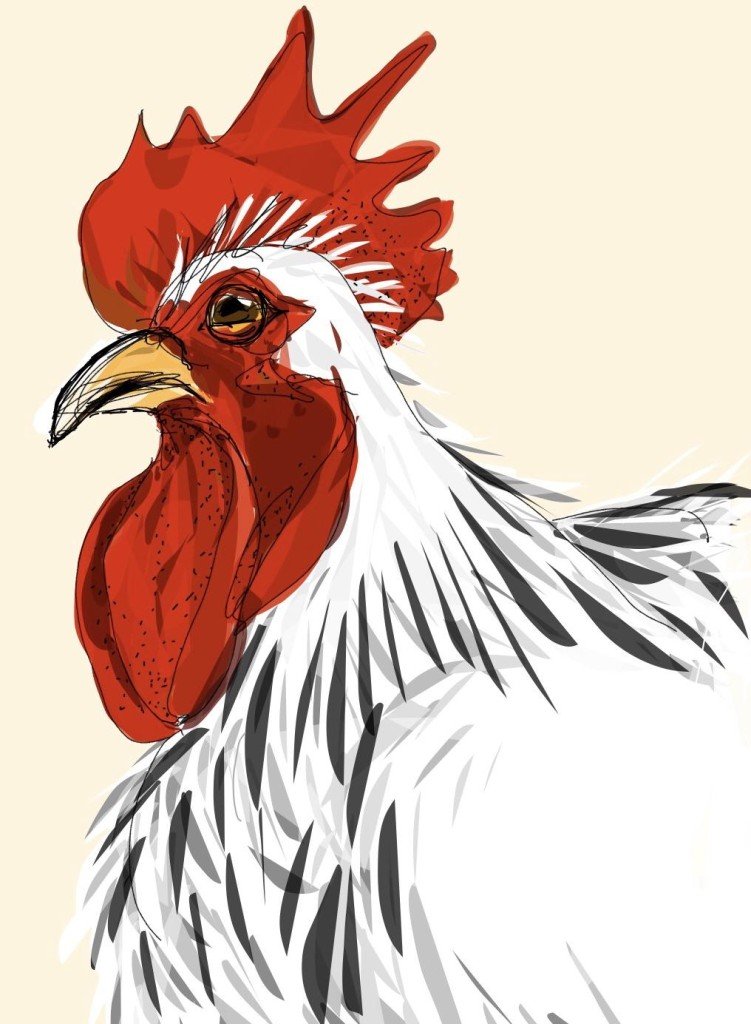 Some are very fancy and looks as through they are wearing posh hats, snazzy boots or unusual pantaloons.Every single chicken has about four thousand feathers.They all have a coloured frill on their heads and under their beaks. They are usually a reddish colour are called combs and wattles. There are nine types of comb in different shapes and sizes.You can tell if the bird is healthy by looking at the colour of its comb and this is also one of the ways that other Chickens pick a strong partner to flirt and mate with.Chickens bathe in the dust to clean their feathers and skin. By doing this they keep away mites, keep cool themselves down and scrub away old skin and muck.
Some are very fancy and looks as through they are wearing posh hats, snazzy boots or unusual pantaloons.Every single chicken has about four thousand feathers.They all have a coloured frill on their heads and under their beaks. They are usually a reddish colour are called combs and wattles. There are nine types of comb in different shapes and sizes.You can tell if the bird is healthy by looking at the colour of its comb and this is also one of the ways that other Chickens pick a strong partner to flirt and mate with.Chickens bathe in the dust to clean their feathers and skin. By doing this they keep away mites, keep cool themselves down and scrub away old skin and muck.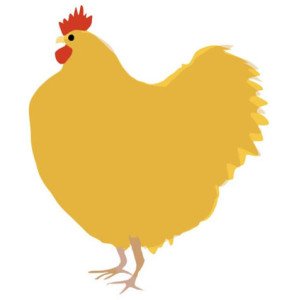 They enjoy getting together in groups when they have their dustbaths as if they are enjoying a day at the spa.They are very communicative and use thirty or so sounds that they put together in many different ways, just like we put words together to make sentences, so that they can natter to each other. In fact they are very sociable creatures and they have incredible memories. They can recognise and remember over a hundred different human and animal faces.
They enjoy getting together in groups when they have their dustbaths as if they are enjoying a day at the spa.They are very communicative and use thirty or so sounds that they put together in many different ways, just like we put words together to make sentences, so that they can natter to each other. In fact they are very sociable creatures and they have incredible memories. They can recognise and remember over a hundred different human and animal faces.
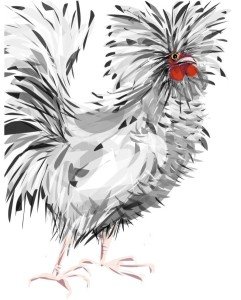 Male chickens are called cockerels and they are famous for being early morning alarm clocks because they crow with a cock-a-doodle-doo sound when the sun rises.
Male chickens are called cockerels and they are famous for being early morning alarm clocks because they crow with a cock-a-doodle-doo sound when the sun rises.
Chickens can navigate and tell the time using the magnetic fields of the earth and the sun, which is how they know when to roost, to snuggle down together in a safe space and sleep, and when to wake up.Because lots of other creatures like to eat chickens they have to be extra careful in watching out for danger.To do this really well they have developed great ways to be aware of threats and get to safety.
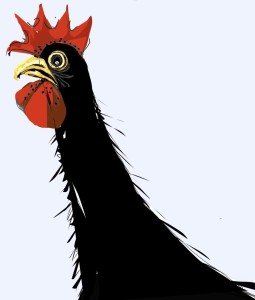 The right eye of a chicken focuses on things nearby, like food, and the left one focusses on the distance and looking out for danger.
The right eye of a chicken focuses on things nearby, like food, and the left one focusses on the distance and looking out for danger.
They can see in colour, just like humans, except that their vision is better than ours because they have Ultra Violet sight as well. Because of this the mother hen can spot if her chicks are unwell even before they are hatched.They have the most excellent ears which help them to avoid being snuck up on by something greedy. As they get older, a chicken's hearing starts to get weaker, the cells in the part of their head responsible for hearing can regrow so that they can mend themselves and hear every bit as well as they used to.They can run at nine miles an hour, which is very fast and comes in very useful getting away from hungry creatures who fancy a chicken for supper.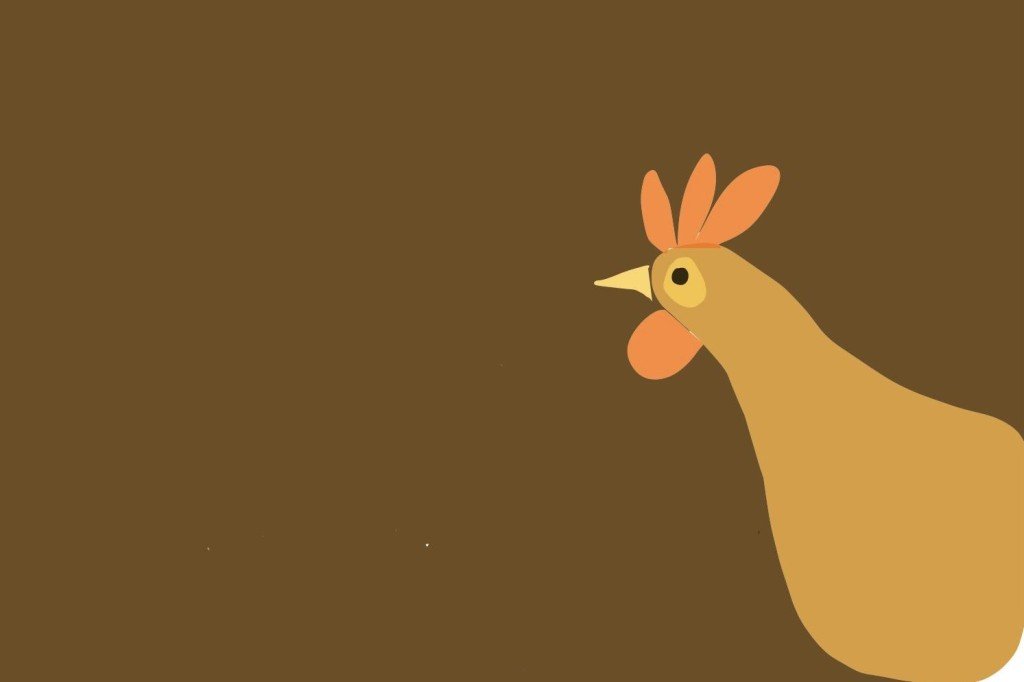 Chickens’ beaks are super sensitive with a cluster of nerves as the tip. They use their beaks to ruffle around in their feathers and root out irritating insects and dirt, to probe around for bits and pieces of food to eat, to drink through, to defend themselves and their chicks and to suck up blades of grass like spaghetti strands.
Chickens’ beaks are super sensitive with a cluster of nerves as the tip. They use their beaks to ruffle around in their feathers and root out irritating insects and dirt, to probe around for bits and pieces of food to eat, to drink through, to defend themselves and their chicks and to suck up blades of grass like spaghetti strands.
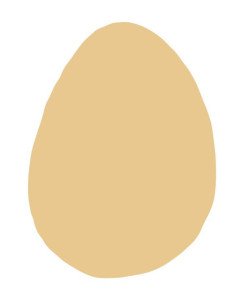 Female chickens are called hens. It is the hens that lay the eggs. Only when the cockerel and the hen have mated is the egg fertilised and will hatch into a chick.
Female chickens are called hens. It is the hens that lay the eggs. Only when the cockerel and the hen have mated is the egg fertilised and will hatch into a chick.
The mother hen natters to the chicks before they are hatched. While they are still all curled up in the egg she makes little trills and chirrups to them so that they will recognise her voice after they hatch.She turns every egg around about fifty times every day so that the chicks inside grow evenly and become big and strong. Because eggs take twenty one days to hatch, that is a lot of work to do.The tiny hatchling chick has a special sort of spur on its beak to help it crack its way out of the shell. It’s really important that the chick makes its own way out into the world. If we try to help it we interrupt the work that the baby chick has to do and we can hurt it.The eggs that are not fertilised are the ones that people eat.Did you know that chickens are the closest living relative to the dinosaurs?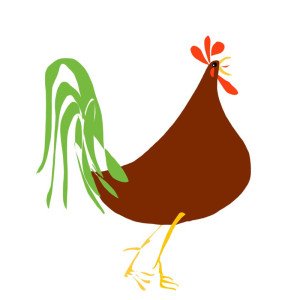 Their DNA has been ‘sequenced’ that sort of means that scientists have worked out the formula or ingredients that makes a chicken into a chicken. These scientists also did the same thing to a fossilised shard of Tyrannosaurus Rex bone, and found that chickens and ostriches the nearest thing we have to them alive in our world today.
Their DNA has been ‘sequenced’ that sort of means that scientists have worked out the formula or ingredients that makes a chicken into a chicken. These scientists also did the same thing to a fossilised shard of Tyrannosaurus Rex bone, and found that chickens and ostriches the nearest thing we have to them alive in our world today.
